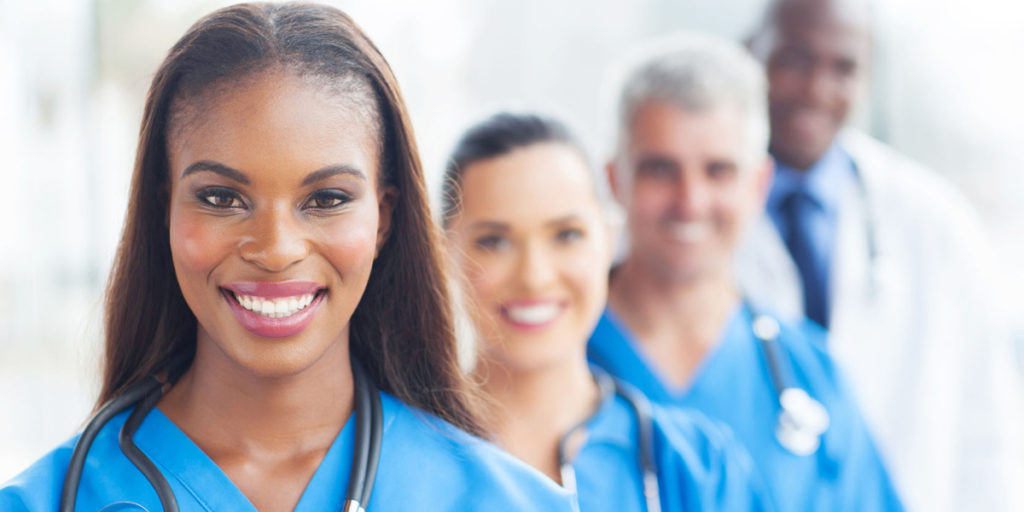PRACTICAL NURSING
Duration: 9 Months
Cost: Contact Whats App (876) 580-0893
Days: To be announced
 z
z 
Start Planning Your Practical Nursing Career as a Licensed Practical Nurse (LPN) Today
ST Monica’s College is the ultimate guide to everything you need to know about starting your career as a Licensed Practical Nurse.
LPNs have rewarding, challenging, and well-paying careers that offer excellent opportunities for growth and advancement. With the resources provided by St. Monica’s College you can begin your journey towards earning an LPN certificate and license today in the practical nursing industry.
PROGRAM INFORMATION
- 17 years and over
- Saturdays only
- 11am-3pm
What is a Licensed Practical Nurse – LPN?
LPN/LVN’s are nurses who provide standard emergency and preventative healthcare to patients who are sick, injured, or just need routine health checkups. LPNs are supervised by registered nurses and doctors and perform their work alongside a team of healthcare providers.
To obtain certification, LPN’s must complete accredited LPN programs, which generally take around eighteen months to complete.
After LPN students complete their coursework, they must pass the American Allied Health Licensure Examination, If they pass, they can pursue specialized certificates in certain areas of healthcare, including gerontology, IV therapy, long-term care, pharmacology, and more.
COURSE DESCRIPTION
Legal, Ethical, Cultural and Ethnic Aspects of Nursing
During this course you will learn about the legal system, laws and ethical principles and practices that underpin all aspects of nursing care..
Anatomy and Physiology
Licensed practical nurses must be knowledgeable about
- the human body and how it functions in order to render quality nursing care to patients and groups of patients.
- This course contains content relating to medical terminology, anatomical and physiological terms, and the normal functioning of the cells, tissues, membranes, organs and bodily systems.
Assessments: The Health History and the Physical Examination
Assessment is the first phase of the nursing process. The purpose of assessment is to allow the licensed practical nurse to determine the healthcare needs of the patient in collaboration with the registered nurse.
A thorough, timely and accurate assessment is essential to the planning and implementation of nursing care. The health history portion of this assessment includes data relating to the patient’s past and current medical and health history; the physical assessment consists of a head to toe examination of the patient and their level of functioning.
Documentation
This course will cover commonly used medical terminology, acceptable abbreviations, the legal aspects of documentation, methods of documentation and documenting care in acute as well as long term care facilities.
Growth and Development Along the Lifespan
Licensed practical nurses provide care to patients of all ages.
- They, therefore, must be knowledgeable about the biological, psychological, cognitive/intellectual, social and spiritual needs of patients from the neonate to the elderly person so that care and communication can be modified according to these needs.
- Student practical nurses will learn about the stages of growth and development as well as the age specific characteristics and needs for the infant, toddler, preschool child, school age child, adolescent, early adulthood, middle aged adults and the elderly.
Patient Safety

Patients are at high risk for incidents and accidents. Some of these risk factors are the function of the patient’s physical or psychological condition, others are the result of healthcare provider errors and mistakes and still more risk factors are environmental in nature. Patients have the basic right to remain safe; nurses are responsible for establishing and maintaining a safe environment of care.
The content of this course will include patient related risk factors such as age, medications used and psychological status, healthcare provider errors and mistakes such as the administration of an incorrect medication dosage and environmental hazards such as wet floors and frayed electrical cords. It also contains information about ergonomics and body mechanics to protect the nurse from injury during patient transfers and movements.
Infection Control and Prevention
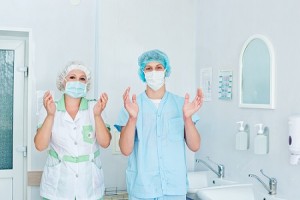 Healthcare associated infections are a major and costly problem that potentially affects virtually all patients in all settings where healthcare services are provided by nurses and other members of the healthcare team.
Healthcare associated infections are a major and costly problem that potentially affects virtually all patients in all settings where healthcare services are provided by nurses and other members of the healthcare team.
This course will provide the learner with information about the chain of infection, microbiology, risk factors relating to infection, the signs and symptoms of infection, standard precautions, special isolation precautions, medical asepsis, surgical asepsis, cleaning, disinfection, sterilization and the management and disposal of biohazardous waste.
Medication Administration
Nurses are prepared to administer medications to patients of all ages. Accuracy is of paramount importance.
During this course, you will review basic mathematics and learn about different measurement systems, calculating medication dosages, medication classifications, routes of administration, the side effects, contraindications, and adverse effects of drugs, medication orders, the “six rights of medication administration” and special considerations for the pediatric and elderly client.
Basic Patient Needs: Comfort and Rest
This course will provide you with information about pain, pain management, the sleep cycle and ways to promote sleep and rest for the patients that a licensed practical nurse will care for.
Basic Patient Needs: Hygiene
Licensed practical nurses provide basic nursing care to patients of all ages in collaboration with other members of the nursing care team such as registered nurses and nursing assistants. Some of the components of hygiene are bathing, skin care, oral care, hand, foot and nail care, perineal care, hair care, shaving and cleaning the eyes, ears and nose.
Some of the environmental hygiene measures that will be also included in this course are cleanliness of the immediate patient care environment and bed making.
- Baths: Therapeutic and nontherapeutic baths
- The procedures for complete and partial bed baths
- Showering
- Skin care: Assessment, cleansing and back rubs
- Oral care: Dentures and natural teeth
- Hand, foot and nail care in addition to the needs of the diabetic patient
- Perineal care: Males, females and care of an indwelling urinary catheter
- Shaving: Males and females
- Special procedures for cleansing the eyes, ears and nose
- Beds: Medical asepsis, types of beds and procedures for each
- Environmental hygiene: Cleanliness of the environment and patient care equipment
- Applying the nursing process to the patient’s hygiene needs
Basic Patient Needs: Mobility
Many patients are affected with acute or chronic disorders and diseases that impact on the patient’s ability to be mobile and functioning in an independent manner.
- During this class, the LPN student will learn about the hazards of immobility, proper patient positioning and alignment, positioning aids, ways to safely transfer patients, the performance of and assistance with range of motion to joints and how to use assistive devices to promote patient mobility, ambulation and independence.
- The hazards of immobility that impact on the patient’s musculoskeletal, respiratory, circulatory, urinary, metabolic, integumentary and gastrointestinal systems
- Levels of activity: Complete bed rest, bed rest with commode privileges, bed rest with bathroom privileges, out of bed to the chair and independent out of bed activity
- Positioning devices and their uses
- Patient transfers in bed, from the bed to the chair and the chair to the bed
- Preventing shearing and friction
- Joint movements and joint related terminology
- Active, passive and active assist range of motion exercises
- Continuous passive motion equipment
- Ambulation assistive devices and their uses
- Applying the nursing process to the mobility needs of the patient
Basic Patient Needs: Fluids and Electrolytes
During this course, the student nurse will learn about the role of fluids and electrolytes which are electrically charged particles essential for normal bodily functioning. Some of the content will include the fluid compartments of the human body, fluid transport mechanisms, electrolytes and the acid-base balance of the body
Emergency Nursing Care
Licensed practical nurses, like the registered nurse and other members of the healthcare team, must be able to perform emergency nursing care interventions both within and outside of the emergency departments and special intensive care departments.
Some of the knowledge, skills and abilities that you will learn in this course will include the assessment and care of the patient who is affected with a cardiopulmonary arrest, shock, hemorrhage, trauma, aspiration, burns, accidental poisonings, substance use and abuse emergencies, musculoskeletal injuries and acts of terrorism and/or bioterrorism.
- The assessment of the patient for emergency medical crises
- Calling for and obtaining help during an emergency medical crisis
- Cardiopulmonary arrest: Performing the ABCs of cardiopulmonary resuscitation for neonates, infants, children and adults
- The assessment and treatment of shock: Cardiogenic shock, neurogenic shock, hypovolemic shock, septic shock, psychogenic shock and anaphylactic shock
- Hemorrhage: The assessment and treatment of arterial bleeding, venous bleeding, capillary bleeding and external bleeding
- The priorities of care and treatment for the trauma patient
- Types of traumatic wounds: Open wounds and closed wounds
- Aspiration of foreign bodies: Populations at risk for aspiration of foreign bodies in the throat, ears and nose
- The signs, symptoms and treatment of complete and partial airway obstructions for the infant, child, adult, conscious and unconscious patient
- Burns: Heat, cold and chemical burns
- The assessment and treatment of burns: Shallow, partial thickness, deep, partial thickness and full thickness burns and the Rule of Nines
- Accidental poisonings: Populations at risk, inhaled, ingested, injected and absorbed poisons
- The treatment of accidental poisonings and the role of the Poison Control Centers
- The signs, symptoms and treatments for various substance abuse emergencies
- Types of skeletal fractures and their treatments: Compound, closed, greenstick, comminuted, spiral, impacted, compressed and depressed fractures
- The assessment and care of dislocations
- Spinal cord injuries: Assessment and care
- Agents of terrorism and/or bioterrorism: Pathogens, nuclear explosion, blasts and chemicals
- The treatment of the adverse effects of terrorism and bioterrorism according to the agent
- Applying the nursing process to the management of all kinds of emergencies
Perioperative Nursing
Many patients have surgical and other invasive procedures. Some of these procedures are elective and others are not elective, but instead, performed for treatment and as a response to some urgent and emergency disease or disorder; some are performed in the acute care setting, others are performed in an outpatient day surgery setting and still more are performed at the bedside.
Licensed practical nurses care for patients, in collaboration with the registered nurse and other members of the surgical team, during the preoperative, intraoperative and postoperative phases of the perioperative process. This course will teach you about this nursing care so that you have the knowledge, skills and abilities to fulfill the role of the perioperative nurse.
Psychiatric and Mental Health Nursing
There is a relationship and connectedness of the mind and the body. Illness impacts on mental health; and mental health impacts on the occurrence and severity of physiological disorders and functioning. Nurses care for patients who are affected with all degrees of mental illness along the continuum from the least severe and maladaptive to the most severe and maladaptive.
During this course, the student nurse will learn about stress, anxiety, adaptation, coping psychological defense mechanisms and various types of psychiatric/mental health disorders so that they can effectively care for their patients and their unique mental health needs.
- Psychological defense mechanisms, their purpose, signs and symptoms
- Stress and anxiety, its effects on mental functioning and stress management techniques
- Coping: Adaptive and maladaptive coping
- Types of psychiatric/mental health disorders: Organic disorders, eating disorders, anxiety disorders, personality disorders, mood disorders, psychogenic disorders and thought process disorders
- Organic mental disorders: The signs, symptoms and treatments for delirium and dementia
- Eating disorders: The signs, symptoms and treatments for anorexia and bulimia nervosa
- Anxiety disorders: The signs, symptoms and treatments for phobias, obsessive-compulsive and posttraumatic stress disorders
- Personality disorders: The signs, symptoms and treatments for paranoid, borderline, antisocial, abusive and dependent personality disorders
- Mood disorders: The signs, symptoms and treatments for depression, bipolar and cyclothymic disorders
- Psychogenic disorders: The signs, symptoms and treatments for psychosomatic and somatoform disorders
- Thought process disorders: The signs, symptoms and treatments for schizophrenia
- The stages and characteristics of addiction and dependence
- Addictive disorders: The signs, symptoms and treatments for illicit drug and alcohol abuse/addiction
- Psychiatric/mental health interventions: Therapeutic relationships, a therapeutic milieu, psychotherapy, cognitive/behavioral therapy, electroconvulsive therapy and medications
- Psychotropic medications, indications, side effects and nursing implications
- Applying the nursing process to the psychiatric and mental health needs of patients
Grief, Loss and the End of Life
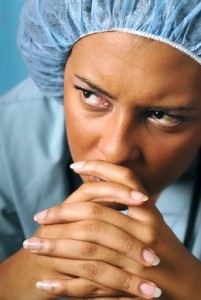 All patients and other people, such as family members, experience grief and loss as the result of many different circumstances including the loss of independence, the loss or alteration of a bodily part such as a breast or leg and when the patient is diagnosed with a life altering or terminal disease.
All patients and other people, such as family members, experience grief and loss as the result of many different circumstances including the loss of independence, the loss or alteration of a bodily part such as a breast or leg and when the patient is diagnosed with a life altering or terminal disease.
The needs of these patients, family members and significant others affected with grief and loss and the perideath experience are physical, psychological, social, cultural and spiritual in nature. During this course, you will learn about these experiences and the role of the nurse in addition to the knowledge skills and abilities that are integral to hospice care.
Rehabilitation and Restorative Care Nursing
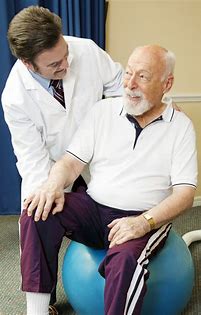
Licensed practical nurses work in a variety of settings including the acute care hospital or medical center, subacute care centers, long term care facilities, in home care and also providing rehabilitation and restorative care in any one of these settings in collaboration with the registered nurse and other members of the rehabilitation/restorative care team such as the physical therapist, occupational therapist and the speech/language therapist.
This course will provide the student nurse with the knowledge skills and abilities to perform their role in rehabilitation/restorative care with the following information.
- The definitions of and the differences between rehabilitation and restorative care
- The indications for and the goals of rehabilitation and restorative nursing care
- The roles and responsibilities of the members of the rehabilitation and restorative care teams
- Pediatric, adult, gerontological and mental health rehabilitation/restorative care
- Disabling disorders: Spinal cord injuries, traumatic brain injury, cerebrovascular accidents, post traumatic stress disorder and polytrauma
- Applying the nursing process to the needs of the patient in need of restorative and rehabilitation nursing services
Maternal and Neonatal Nursing
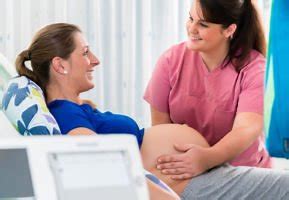
Many licensed practical nursing graduates choose to work in the obstetrics and delivery areas of nursing practice. This course will provide the student with the basic abilities to perform in these areas if they choose to do so.
The content of this course will include information about the antepartal, labor/delivery and postpartum processes and well as the care of the newborn after delivery.
AFTER GRADUATION AND WORK EXPERIENCE
We are working with our partners in Canada for job opportunities and possible work experience.

